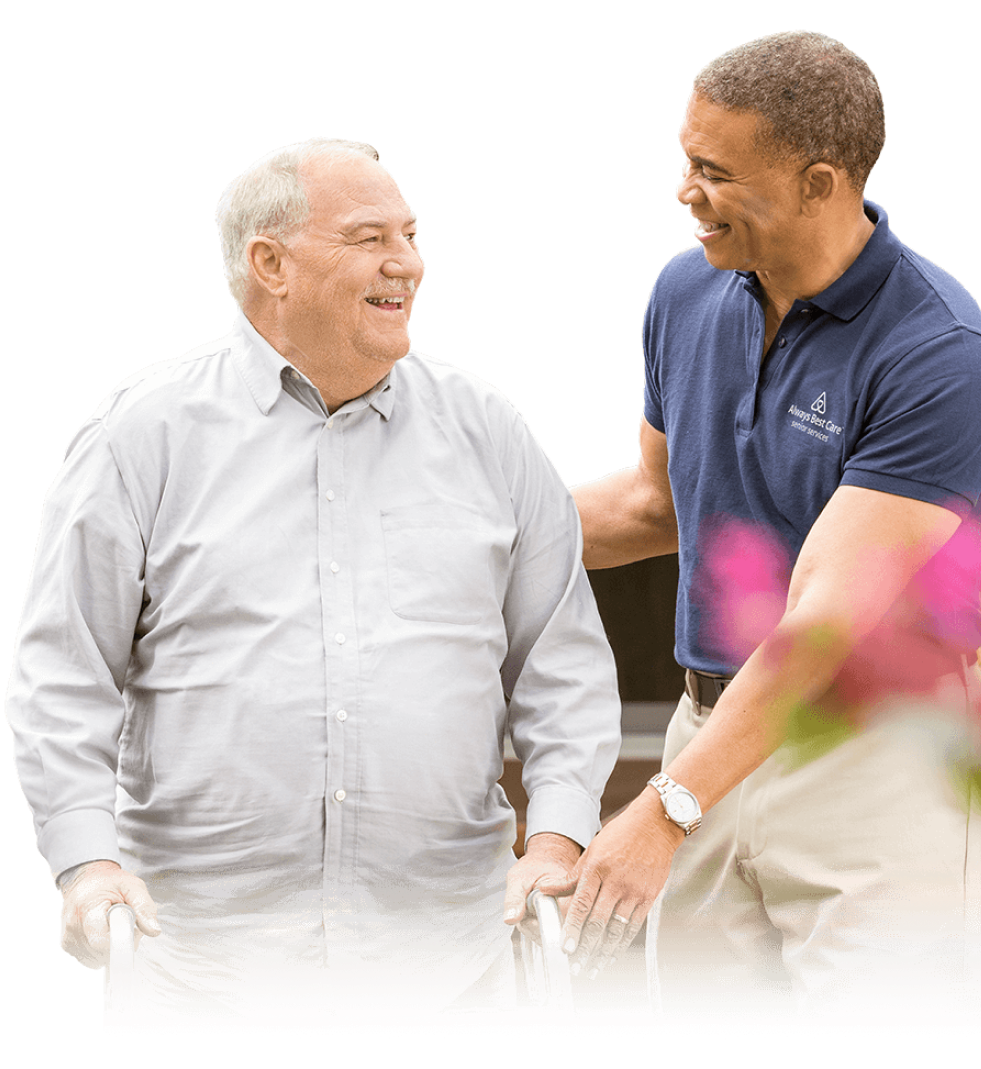This website uses cookies so that we can provide you with the best user experience possible. Cookie information is stored in your browser and performs functions such as recognising you when you return to our website and helping our team to understand which sections of the website you find most interesting and useful.
Home Care In Modesto, CA

They say that your golden years are the best years of your life. For most older Americans, that's how it should be - a time to relax, reflect, and live life in a familiar place. After all, senior citizens in the U.S. have worked tirelessly to build a better economy, serve their communities, and raise families.
However, as seniors grow older, completing daily tasks like showering and enjoying activities such as visiting the historic Modesto Arch gets harder without someone by their side. Unfortunately, many older Americans aren't able to rely on their adult children for help. The reality in today's world is that family members do not have the skills or time to dedicate to caring for their parents. That's where Always Best Care Senior Services comes in.
Our in-home care services are for people who prefer to stay at home as they grow older but need ongoing care that family or friends cannot provide. More and more older adults prefer to live far away from long-term, institutionalized facilities and closer to the place where they feel most comfortable - their home. Home care in Modesto, CA is a safe, effective way to give your loved ones the care they need when they need it the most.

 Home Care Services
Home Care Services
- Home Care in Modesto, CA
- The Always Best Care Difference
- Types of In-home Care in Modesto, CA
- Benefits of Home Care in Modesto, CA
- Aging in Place: The Preferred Choice for Most Seniors
- Affordable Care Plans
- Compassionate Care. Trusted Caregivers
- Assisted Living Referral Services
- Taking the First Step with Always Best Care
 Service Areas
Service Areas
The Always Best Care Difference
Since 1996, Always Best Care has provided non-medical in-home care for seniors to help them maintain a healthy lifestyle as they get older. We are proud to have helped more than 25,000 seniors maintain higher levels of dignity and respect. We focus on providing seniors with the highest level of in-home care available so that they may live happily and independently.
Unlike some senior care companies, we genuinely want to be included in our clients' lives. We believe that personalized care is always the better option over a "one size fits all" approach. To make sure our senior clients receive the best care possible, we pair them with compassionate caregivers who understand their unique needs. That way, they may provide care accordingly without compromising their wellbeing.
The Always Best Care difference lies in life's little moments - where compassionate care and trustworthy experience come together to help seniors live a fruitful, healthy life. Whether you are an aging adult that can't quite keep up with life's daily tasks or the child of a senior who needs regular in-home services, Always Best Care is here to help.
“Love the information the office provide and how wonderful the office looked. Chelsea provide me”
“Highly Experienced #Caregivers provide everything in levels one and two, plus knowledgeable assistance to help”
“In retirement years, many #elders start to feel lonely and depressed with the lack of”
“Worrying about senior’s care and #health in Assisted Living is common. Well, you can stop”
“Love the information the office provide and how wonderful the office looked. Chelsea provide me with enough information.”
“Highly Experienced #Caregivers provide everything in levels one and two, plus knowledgeable assistance to help seniors who are suffering from a chronic illness, who are bed-bound, and those who are on hospice.”
“In retirement years, many #elders start to feel lonely and depressed with the lack of a social life. Hire #caregivers from Always Best Care of Fresno to reduce your senior’s loneliness and ensure their care.”
“Worrying about senior’s care and #health in Assisted Living is common. Well, you can stop fretting now. Contact Always Best Care of #Fresno and find the best Assisted Living communities near you.”
What is Non-Medical Senior Care in Modesto, CA?

Home is where the heart is. While that saying can sound a tad cliche, it is especially true for many seniors living in America. When given a choice, older adults most often prefer to grow older at home. An AARP study found that three out of four adults over the age of 50 want to stay in their homes and communities as they age.

When you begin to think about why, it makes sense. Home offers a sense of security, comfort, and familiarity.

The truth is, as we age, we begin to rely on others for help. When a family is too busy or lives too far away to fulfill this role, in-home senior care is often the best solution. Home care services allow seniors to enjoy personal independence while also receiving trustworthy assistance from a trained caregiver.

At Always Best Care, we offer a comprehensive range of home care services to help seniors stay healthy while they get the help they need to remain independent. As your senior loved one gets older, giving them the gift of senior care is one of the best ways to show your love, even if you live far away.

Types of Elderly Care in Modesto, CA
To give our senior clients the best care possible, we offer a full spectrum of in-home care services:

Personal Care Services
If your senior loved one has specific care needs, our personal care services are a great choice to consider. Personal care includes the standard caregiving duties associated with companion care and includes help with tasks such as dressing and grooming. Personal care can also help individuals with chronic conditions like diabetes.
Common personal care services include assistance with:
- Eating
- Mobility Issues
- Incontinence
- Bathing
- Dressing
- Grooming


Home Helper Services
Sometimes, seniors need helpful reminders to maintain a high quality of life at home. If you or your senior has trouble with everyday tasks like cooking, our home helper services will be very beneficial.
Common home helper care services include assistance with:
- Medication Reminders
- Meal Preparation
- Pet Care
- Prescription Refills
- Morning Wake-Up
- Walking
- Reading


Companionship Services
Using this kind of care is a fantastic way to make life easier for you or your senior loved one. At Always Best Care, our talented caregivers often fill the role of a companion for seniors. That way, older adults can enjoy their favorite local activities, such as visiting Moose Park with friends while also receiving the care they need daily or weekly.
Common companionship services include:
- Grocery Shopping
- Transportation to Appointments
- Nutritional Assistance
- Conversation
- Planning Outings
- Completing Errands
- Transportation to Community
- Events and Social Outings


Respite Care Services
According to AARP, more than 53 million adults living in the U.S. provide care to someone over 50 years old. Unfortunately, these caregivers experience stress, exhaustion, and even depression. Our respite care services help family caregivers address urgent obligations, spend time with their children, and enjoy nearby activities. Perhaps more importantly, respite care gives family members time to recharge and regroup. Taking personal time to de-stress reduces the risk of caregiver burnout. So, if you've always wanted to eat at the local Dewz Restaurant or visit McHenry Mansion Visitors Center, don't feel bad. Doing so is great for both you and your loved one.
At the end of the day, our goal is to become a valuable part of your senior's daily routine. That way, we may help give them the highest quality of life possible. We know that staying at home is important for your loved one, and we are here to help make sure that is possible.
If you have been on the fence about non-medical home care, there has never been a better time than now to give your senior the care, assistance, and companionship they deserve.

Benefits of Home Care in Modesto, CA
Always Best Care in-home services are for older adults who prefer to stay at home but need ongoing care that friends and family cannot provide. In-home care is a safe, effective way for seniors to age gracefully in a familiar place and live independent, non-institutionalized lives. The benefits of non-medical home care are numerous. Here are just a few reasons to consider senior care services from Always Best Care:
Always Best Care offers a full array of care options for patients at all levels of health. With our trusted elderly care services, your loved one will receive the level of care necessary for them to enjoy the highest possible quality of life.
Request More Information
Aging in Place: The Preferred Choice for Most Seniors
While it's true that some seniors have complicated medical needs that prevent them from staying at home, aging in place is often the best arrangement for seniors and their families. With a trusted caregiver, seniors have the opportunity to live with a sense of dignity and do so as they see fit - something that is unavailable to many older people today.
In-home care makes it possible for millions of seniors to age in place every year. Rather than moving to a strange nursing home, seniors have the chance to stay at home where they feel the happiest and most comfortable.
Here are just a few of the reasons why older men and women prefer to age at home:
How much does a senior's home truly mean to them?
A study published by the American Society on Aging found that more than half of seniors say their home's emotional value means more than how much their home is worth in monetary value. It stands to reason, then, that a senior's home is where they want to grow old.
With the help of elderly care in Modesto, CA, seniors don't have to age in a sterilized care facility. Instead, they can age gracefully in the place they want to be most: their home. In contrast, seniors who move to a long-term care facility must adapt to new environments, new people, and new systems that the facility implements. At this stage in life, this kind of drastic change can be more harmful than helpful.
Institutional care facilities like nursing homes often put large groups of people together to live in one location. On any given day, dozens of staff members and caregivers run in and out of these facilities. Being around so many new people in a relatively small living environment can be dangerous for a seniors' health and wellbeing. When you consider that thousands of seniors passed away in nursing homes during the COVID-19 pandemic, opting for in-home care is often a safer, healthier choice for seniors.
Aging in place has been shown to improve seniors' quality of life, which helps boost physical health and also helps insulate them from viral and bacterial risks found in elderly living facilities.
For many seniors, the ability to live independently with assistance from a caregiver is a priceless option. With in-home care, seniors experience a higher level of independence and freedom - much more so than in other settings like a nursing home. When a senior has the chance to age in place, they get to live life on their own terms, inside the house that they helped make into a home. More independence means more control over their personal lives, too, which leads to increased levels of fulfillment, happiness, and personal gratification. Over time, these positive feelings can manifest into a healthier, longer life.
More independence, a healthier life, and increased comfort are only a few benefits of aging in place. You have to take into consideration the role of cost and convenience. Simply put, it's usually easier and more affordable to help seniors age in place than it is to move them into an institutional care facility. According to the US Department of Housing and Urban Development, seniors who age in the comfort of their homes can save thousands of dollars per month.
In-home care services from Always Best Care, for instance, are often less expensive than long-term solutions, which can cost upwards of six figures per year. To make matters worse, many residential care facilities are reluctant to accept long-term care insurance and other types of payment assistance.
With Always Best Care's home care services, seniors and their families have a greater level of control over their care plans. In-home care gives seniors the chance to form a bond with a trusted caregiver and also receive unmatched care that is catered to their needs. In long-term care facilities, seniors and their loved ones have much less control over their care plan and have less of a say in who provides their care.

Affordable Care
In-home care is a valuable resource that empowers seniors to age in place on their own terms. However, a big concern for many families and their loved ones is how much in-home care costs. If you're worried that in-home care is too expensive, you may be pleasantly surprised to learn that it is one of the most affordable senior care arrangements available.
Typically, hiring an Always Best Care in-home caregiver for a few hours a week is more affordable than sending your loved one to a long-term care facility. This is true even for seniors with more complex care needs.
At Always Best Care, we will work closely with you and your family to develop a Care Plan that not only meets your care needs, but your budget requirements, too. Once we discover the level of care that you or your senior need, we develop an in-home care plan that you can afford.
In addition to our flexible care options, families should also consider the following resources to help offset potential home care costs:

Compassionate Care. Trusted Caregivers.
When you or your senior loved one needs assistance managing daily tasks at home, finding a qualified caregiver can be challenging. It takes a special kind of person to provide reliable care for your senior loved one. However, a caregiver's role involves more than meal preparation and medication reminders. Many seniors rely on their caregivers for companionship, too.
Our companion care services give seniors the chance to socialize in a safe environment and engage in activities at home. These important efforts boost morale and provide much-needed relief from repetitive daily routines. A one-on-one, engaging conversation can sharpen seniors' minds and give them something in which to be excited.
At Always Best Care, we only hire care providers that we would trust to care for our own loved ones. Our senior caregivers in Modesto, CA understand how important it is to listen and communicate with their seniors. A seemingly small interaction, like a short hug goodbye, can make a major difference in a senior's day. Instead of battling against feelings of isolation, seniors begin to look forward to seeing their caregiver each week.
Understanding the nuances of senior care is just one of the reasons why our care providers are so great at their job.
Unlike some senior care companies, our caregivers must undergo extensive training before they work for Always Best Care. In addition, our caregivers receive ongoing training throughout the year. This training ensures that their standard of care matches up to the high standards we've come to expect. During this training, they will brush up on their communication skills, safety awareness, and symptom spotting. That way, your loved one receives the highest level of non-medical home care from day one.
Assisted Living Referral Services
While it's true that many seniors prefer to age at home, sometimes in-home care isn't the best fit. For those seniors and their families, choosing an assisted living facility makes more sense. Unfortunately, finding the optimal care facility is easier said than done in today's day and age. That's when Always Best Care's assisted living referral services begin to make a lot of sense.
Assisted living is a form of housing intended for seniors who require varying degrees of medical and personal attention. Accommodations may include single rooms, apartments, or shared living arrangements. Assisted living communities are typically designed to resemble a home-like environment and are physically constructed to encourage the independence of residents.

At assisted living communities, seniors receive help with daily activities such as bathing, dressing, and eating. They may also benefit from coordination of services with outside healthcare providers, and monitoring of resident activities to ensure their health, safety, and well-being. Caregivers who work at assisted living communities can also provide medication administration and personal care services for older adults.
Other services offered within assisted living communities can include some or all of the following:
- Housekeeping
- Laundry
- Recreational Activities
- Social Outings
- Emergency Medical Response
- Medication Monitoring
- Family Visitation
- Personal Care

At Always Best Care, our representatives can match your senior's emotional, physical, and financial needs with viable assisted living communities nearby. Results are based on comparative data, so you can select the best choice for you or your loved one.
Always Best Care works closely with local senior living communities to gain valuable knowledge that we then use to help seniors and their loved ones make informed decisions. This information can include basic care and rent, resident availability, and services provided. Because Always Best Care is compensated by these communities, we provide senior living referral services at no extra cost to you.
Some of the most popular assisted living communities to consider in our area include the following:
- Orangeburg Memory Care
- Sisters Assisted Living
- The Gardens of Modesto
- Dale Commons
- El Rio Memory Care Community
- Bethel Retirement Community

For many seniors, moving into a senior living community revolves around how and when they want to make a transition to more involved care. Some seniors are more proactive about transitioning to independent living. Others choose to remain home until their care needs or other requirements are satisfied. Remember - our staff is here to help. Contact our office today to learn more about assisted living communities and how we can find a facility that exceeds your expectations.

Taking the First Step with Always Best Care
The first step in getting quality in-home care starts with a personal consultation with an experienced Always Best Care Care Coordinator. This initial consultation is crucial for our team to learn more about you or your elderly loved one to discover the level of care required. Topics of this consultation typically include:
A discussion of your needs and how our trained caregivers can offer assistance in the most effective way

A draft of your care plan, which includes highly detailed notes and a framework for the care that you or your senior will receive

Discuss payment options and help coordinate billing with your insurance provider

Our caregivers are trained to spot changes that clients exhibit, like mental and physical decline. As your trusted senior care company, we will constantly assess and update your Care Plan to meet any new emotional, intellectual, physical, and emotional needs.
If you have never considered in-home care before, we understand that you and your family may have concerns about your Care Plan and its Care Coordinator. To help give you peace of mind, know that every team member and caregiver must undergo comprehensive training before being assigned to a Care Plan.
At the end of the day, we only hire the best of the best at Always Best Care. Whether you need home care in Modesto, CA 24-hours a day or only need a respite for a couple of hours, we are here to serve you.
When you're ready, we encourage you to contact your local Always Best Care representative to set up a Care Consultation. Our Care Coordinators would be happy to meet with you in person to get to know you better, discuss your needs, and help put together a personalized Care Plan specific to your needs.

Latest News in Modesto, CA
‘Japanese dollar store’ opening in Modesto. Here’s what it offers
Maria Luisa Figueroahttps://www.modbee.com/news/local/article308589250.html
If you happen to drive on Sisk Road near Plaza Parkway, you may have noticed a new store appearing on the sign of retailers at Central Valley Plaza. Olive Garden, Once Upon a Child, Kohl’s, Walmart, and now Daiso.The Japanese retailer of small goods, household items, stationery, snacks, and more will be the first location in Modesto. According to their website, the Modesto location will open later this fall. A large sign is already up on the storefront, which is ...
If you happen to drive on Sisk Road near Plaza Parkway, you may have noticed a new store appearing on the sign of retailers at Central Valley Plaza. Olive Garden, Once Upon a Child, Kohl’s, Walmart, and now Daiso.
The Japanese retailer of small goods, household items, stationery, snacks, and more will be the first location in Modesto. According to their website, the Modesto location will open later this fall. A large sign is already up on the storefront, which is located between Once Upon a Child and Dollar Tree.
“I love going to Daiso, it’s like the Japanese dollar store,” one Yelp reviewer said.
Daiso was founded in 1977 in Japan and was started as a street vending shop offering items for 100 yen, or about $1. The family-owned company now sells over 100,000 products across its 6,000 stores worldwide. The website lists 150 locations in the United States with a long list of stores opening this year.
The Modesto location will join three other stores in the Central Valley: two in Stockton and one in Atwater.
Their website states: “We promise to be a haven for shoppers seeking quality merchandise at affordable prices,” with a mission to “Create joy through a fun shopping experience with unique products at an extraordinary value.”
Shoppers may at first be confused as all the items are priced in Yen, but the prices are color-coded and price guides posted throughout the store list each item’s pricing tier. Most items are between $1-$5.
On social media, adults love the store for the unique and everyday items at affordable prices, while children shop for stuffed animals, stickers, snacks and Sanrio characters like Hello Kitty.
No information is available yet as to employment opportunities or the official opening date.
This story was originally published June 13, 2025 at 2:30 PM.
World champion athlete opens Brazilian health foods cafe next to his Modesto studio
Dominique Williamshttps://www.modbee.com/news/business/biz-columns-blogs/biz-beat/article308228705.html
Samir Chantre is a three-time Brazilian jiu-jitsu world champion, a 10-time American national champion in the same sport and, most recently, a Modesto restaurant owner.That hardly encompasses all that the Rio de Janeiro native and third-degree black belt has accomplished, but the rest is better saved for another day. Today, Chantre bears the title “Rio Juice - Brazilian Juice Bar owner.”He opened the health foods cafe June 5 on Prescott Road, in partnership with his wife, Nathalia, who works as a sports nutritionist...
Samir Chantre is a three-time Brazilian jiu-jitsu world champion, a 10-time American national champion in the same sport and, most recently, a Modesto restaurant owner.
That hardly encompasses all that the Rio de Janeiro native and third-degree black belt has accomplished, but the rest is better saved for another day. Today, Chantre bears the title “Rio Juice - Brazilian Juice Bar owner.”
He opened the health foods cafe June 5 on Prescott Road, in partnership with his wife, Nathalia, who works as a sports nutritionist. All of the recipes are her own.
The kicker: Rio Juice sits directly next door to Ares Brazilian Jiu Jitsu, a gym Chantre co-founded in 2016 and teaches at. Rio Juice even is fixed with a large window and a countertop bar where parents and other interested patrons can watch the athletes practice.
“We are advocates of the healthy lifestyle,” Chantre said. “So we have the Brazilian jiu-jitsu (gym), and then we have a Brazilian juice bar.”
There are around 60 Ares academies worldwide affiliated with Chantre and its three other founders — Alan Moraes, Milton Bastos and Osvaldo “Queixinho.” Chantre operates the Modesto and Lathrop locations.
That’s not all, though, because Chantre isn’t one to sit around and twiddle his thumbs. Two days after the soft opening of his Modesto cafe, he opened a PROTEINHOUSE franchise in Sacramento’s Arden Mall with partners Mark Ponticelli and January Siphan, who also own the PROTEINHOUSE in Modesto.
The origin of Rio Juice’s name probably is obvious, but if not, Chantre explained: “Rio is our city in Brazil, Rio de Janeiro. And Rio Juice, because the juice bar. And (Rio Juice) is actually “RJ”, which is also (short for) Rio de Janeiro.”
The “r” and the “j” in the cafe’s logo are separated by a palm tree, which Chantre said are common on the beaches in the city. The ‘j” is also an upside-down bendy straw, so add “creative” to Chantre’s list of qualities.
Rio Juice offers a variety of drink options including protein shakes ($8.50 to $11), a milkshake made with sugar-free ice cream ($10 to $14) and coffee drinks including espresso, drip, affogato and protein lattes ($2 to $7).
Food items include yogurt parfaits for $6, smoothie bowls (essentially a protein shake with toppings) ranging from $9.50 to $12, avocado toast for $8, Brazilian chicken empanadas with a side salad for $8 and pão de queijo (Brazilian cheese bread) ranging from $5 to $12.
Of course, Rio Juice also serves acai bowls, which are made with frozen, pureed acai berries native to Brazil. They are $9 for 12 ounces or $12 for 16 ounces.
Nutritional information is provided at the bottom of each menu item, including calories and the grams of protein, carbs and fat.
Rio Juice, at 1711 Prescott Road, is open Monday through Saturday from 9 a.m. to 8 p.m., though that could change. For more information, visit instagram.com/riojuice.ca.
This story was originally published June 12, 2025 at 6:00 AM.
Big Turlock celebration is moving this year. See why, when to be there
Pat Clarkhttps://www.modbee.com/entertainment/article306432231.html
As summer quickly approaches, also come some of the greater Modesto region’s popular annual celebrations.And, yes, the monthlong Graffiti Summer blowout returns in June as well, but look for details on that in a separate story.This year’s Carnegie Arts Center Block Party is moving from the streets around the Turlock gallery to a downtown park. The switch puts a trio of community events that day near one another, according to Lisa McDermott, the arts center’s director.“While we were drawing 500-plu...
As summer quickly approaches, also come some of the greater Modesto region’s popular annual celebrations.
And, yes, the monthlong Graffiti Summer blowout returns in June as well, but look for details on that in a separate story.
This year’s Carnegie Arts Center Block Party is moving from the streets around the Turlock gallery to a downtown park. The switch puts a trio of community events that day near one another, according to Lisa McDermott, the arts center’s director.
“While we were drawing 500-plus people to our event every year at the CAC, we knew that on any summer Saturday, families might be choosing between us and the Turlock Certified Farmers Market on East Main and another makers market that happens on West Main,” she said in an email. “Moving our event to Central Park — located between the two — connects the three events and will make for a great community vibe.”
Also planned for the month are celebrations of the Juneteenth national holiday in Modesto, Riverbank and Lathrop, as well as apricots, lumber and more.
Here’s a look at just some of what’s coming up in the greater Modesto area for June:
PATTERSON APRICOT FIESTA – May 30-June 1: This annual celebration has a craft fair, food and beer booths, live entertainment, a parade at 10 a.m. Saturday, a kids zone and more. There will be fireworks at dusk Saturday. Festival hours are 5-11 p.m. Friday, 9 a.m.-8 p.m. Saturday, 9 a.m.-5 p.m. Sunday. Downtown Patterson. apricotfiesta.com.
HILMAR DAIRY & FARM FESTIVAL – June 7: Hilmar’s annual event has Little Milkman and Milkmaid contests, food and craft vendors. There will be fireworks at dusk. 5-10 p.m. Hilmar High football field, 7807 N. Lander Ave., Hilmar. hilmarchamber.com.
MODESTO JUNETEENTH CELEBRATION – June 14: The King-Kennedy Memorial Center Board of Directors will celebrate Juneteenth during a “We Shall Rise” festival that includes live entertainment with Valley Rhythm Section, food vendors, games and more. 1-6 p.m. Graceada Park, 401 Needham St., Modesto. 209-568-3643.
CARNEGIE ARTS CENTER BLOCK PARTY – June 14: This annual community event for all ages moves from outside the arts center to a Turlock park this year. Creative activities, live music and more will be available. 8 a.m.-1 p.m. Central Park, downtown Turlock. Free. carnegieartsturlock.org.
SKIES THE LIMIT HOT AIR BALLOON FESTIVAL – June 14: The annual Ceres fest will go on, weather permitting. The schedule has balloons lifting off beginning at 6 a.m. Tethered rides will be offered to the public for $10. There will be food trucks, vendors, live music. 5 a.m.-noon. River Bluff Regional Park, 3761 Hatch Road, Ceres. Free to attend. 209-538-5628.
SLAVERY REMEMBRANCE DAY – June 14: Silver Square Lodge #66/Creators Club of Modesto offers a “Never Be Forgotten, Never Be Repeated Train Ride Back In Time” to Allensworth Historical State Park. The train departs from the Modesto Amtrak station at 7:30 a.m., and returns at 4:30 p.m. Attendees will enjoy food, vendors and live music, along with a guided town tour that highlights significant aspects of Black history. Train fare is $27 round trip. Calling ahead for reservations is recommended, 209-595-6966. www.facebook.com/profile.php?id=100088708692266.
FREEDOM TRAIL WALK-A-THON – June 19: Silver Square Lodge will hold a second “Never Be Forgotten, Never Be Repeated” event with a walk, luncheon, dinner and program. The walk from 9-11 a.m. will be along the Helen White Trail in Modesto, meeting at Martin Luther King Drive and California Avenue. After the walk will be several events at Modesto Centre Plaza’s Arbor Theater, 1000 L St. A lunch will be offered noon-1 p.m. From 1-5 p.m., a youth symposium and rally will take place, featuring a tribute to Col. Allen Allensworth and Prince Hall through films, lectures, music and dancing. After the youth event, participants will receive certificates for free backpacks. A dinner and program will be held 5-6 p.m., followed by a concert featuring Darnell Robinson from 7-11 p.m. Donation for the slate of activities is $75, which will go toward student scholarships. 209-595-6966.
RIVERBANK JUNETEENTH CELEBRATION – June 19: “A Day of Family Fun: Juneteenth Celebrating Freedom” marks another community holiday event. The day will feature activities for children, food, bands, DJs, vendors, gospel singers, cultural performances, educational exhibits, a Black business expo and community resource information. 11 a.m.-5 p.m. Riverbank Community Center, 3600 Santa Fe St. 209-568-3643.
LATHROP JUNETEENTH CELEBRATION – June 19: The Lathrop Juneteenth Heritage Committee presents its third annual event with vendors, food trucks, live music, spoken word and games for kids. 4:30-8:30 p.m. Lathrop Generations Center, 450 Spartan Way. Free, reserve at www.lathropjuneteenth.us.
TUOLUMNE LUMBER JUBILEE – June 20-22: The annual fest celebrates the logging industry with vendors, a carnival, parade, music, logging contests and more, ending with a tug-of-war at 5:30 p.m. Sunday. See website for times. West Side Memorial Park, Tuolumne. motherlodetimbersports.org/tuolumne-lumber-jubilee.
MOTHER LODE FAIR – June 26-29: The fair in Sonora promises all-ages fun with plenty of activities, including a carnival. In the arena will be an ATV & Moto Rodeo on Friday, and truck and tractor pulls Saturday and Sunday. There will be live bands on stage all four days, food, livestock and more. 3-11 p.m. Thursday-Friday; 1-11 p.m. Saturday-Sunday. Mother Lode Fairgrounds, 220 Southgate Drive, Sonora. $10-$17, free ages 5 and under; separate costs for carnival; arena and music included in ticket price. motherlodefair.org.
INDEPENDENCE CELEBRATION – June 27-28: The Turlock Downtown Property Owners Association holds an early Independence Day event featuring a car show and parade. A drone show is also tentatively planned. Opening ceremonies are at 6 p.m. Friday at Central Park before a parade begins at 6:30 p.m., with the drone show, if held, at 9 p.m. On Saturday, there will be a car show, farmers market and a makers market from 8 a.m.-1 p.m. Downtown Turlock. www.turlockdowntown.com/event.
I stopped by iconic Modesto coffee shop for lunch. Here’s what I got for $25
Angela Rodriguezhttps://www.modbee.com/news/local/article306322596.html
As a Modesto native, I’m constantly surprised by how many local spots I’ve yet to discover.That’s exactly what makes The Modesto Bee’s “On A Budget” series, which focuses on affordable fun and cheap eats in Stanislaus County, so exciting.It’s introduced me to hidden gems throughout the area and helped me add fresh favorites to my go-to list.A Bee reader recently recommended that ...
As a Modesto native, I’m constantly surprised by how many local spots I’ve yet to discover.
That’s exactly what makes The Modesto Bee’s “On A Budget” series, which focuses on affordable fun and cheap eats in Stanislaus County, so exciting.
It’s introduced me to hidden gems throughout the area and helped me add fresh favorites to my go-to list.
A Bee reader recently recommended that I check out Queen Bean Coffee and Social House in Modesto for my $25 adventure.
Nestled inside a charming 1914 Victorian home, Queen Bean Coffee and Social House has been serving the Modesto community since 2004.
The 116-year-old house-turned-coffee shop located at 1126 14th St., in Modesto, entered a new chapter in September 2024, when Sam Pierstorff and Ruhi Sheikh purchased the property at 1126 14th St. in Modesto.
On a recent Tuesday afternoon, I stopped by the iconic downtown spot for lunch. Here’s what I got for $25:
Wanting to make the most of my visit, I took some time to see what others had to say about Queen Bean Coffee and Social House online.
While the coffee shop holds a modest 3.7-star rating on Yelp with 365 reviews, it fares much better on Google, where it boasts a four-and-a-half-star rating from 789 reviewers.
“The look, warmth and feel of this coffee shop is truly unmatched,” Google user Brian Bose wrote in a five-star review, calling it “truly beautiful with amazing coffee and food.”
As I stepped through the front door, Brian’s words rang true. The space buzzed with energy — warm, inviting and filled with the rich aroma of fresh coffee.
The cafe was alive with people of all ages chatting over lunch, typing away on laptops and savoring their drinks. In that moment, the “Social House” part of Queen Bean’s name made perfect sense — it isn’t just a coffee shop; it’s a community gathering place.
Not wanting to fall behind the growing lunch crowd, I quickly joined the line.
Queen Bean’s menu offers a wide variety of brunch options, from fresh pastries and hearty breakfast bowls to sandwiches and salads.
A few menu items stood out right away, especially the breakfast bowl. It’s loaded with eggs, potatoes, onions, black beans, tomatoes, cheddar cheese and your choice of ham, bacon, sausage or soy chorizo — all topped off with a side of chef and pastry maker Lorena’s famous salsa.
I was also tempted by the Azteca Mocha, made with espresso, Mexican chocolate and a kick of cayenne.
Though the breakfast bowl was tempting, I was running on empty after skipping breakfast, so I opted for the breakfast burrito instead. It came with all the same flavorful ingredients, wrapped in a warm tortilla, and cost $13.49.
For an afternoon boost, I couldn’t resist adding a coffee to my order.
While the Azteca Mocha sounded intriguing, I decided to stick with something more my style and ordered a 20-ounce iced Midwest Mocha, made with hazelnut, white mocha and caramel, for $6.25.
After paying, I scanned the busy coffee shop for a seat, which wasn’t easy during the lunch rush. Luckily, I found a small table with a single chair tucked in a corner.
As I waited for my order, I took in the cozy atmosphere, including the mix of eclectic decor, the hum of conversation and the comforting sounds of the espresso machine in action.
Within five minutes, my coffee was ready. My breakfast burrito arrived shortly after.
I like to think of myself as a bit of a coffee connoisseur — though, to be honest, I’m just picky when it comes to my brew.
The Midwest Mocha completely took me by surprise. It struck a perfect balance between sweet and strong, with just enough coffee flavor to shine through without being overpowering
The breakfast burrito was just as satisfying. Light yet filling, it was full of flavor and complemented perfectly by the side of salsa.
It hit the spot without leaving me feeling weighed down.
Queen Bean Coffee and Social House offers a diverse brunch menu, featuring coffees, pastries, breakfast entrees and more.
Prices for breakfast and lunch entrees range from $7 to $14. Pastries start at $2.
In addition, the coffee shop serves a wide selection of iced and hot coffee drinks, teas and smoothies, priced between $4.50 and $6.50.
I got a breakfast burrito and iced coffee for $19.74.
After taxes, fees and a 15% tip, my total came out to $24.71.
On my usual outings around Modesto, I’ve often passed by Queen Bean Coffee and Social House in favor of my usual spots — but I had no idea what I was missing.
It served up some of the most delicious and budget-friendly bites I’ve had in town.
I will definitely be returning.
Queen Bean Coffee and Social House is open 7:30 a.m. to 3 p.m. Tuesday through Friday, 9 a.m. to 4 p.m. Saturday and 9 a.m. to 2 p.m. Sunday.
The coffee shop is closed on Mondays.
Have any ideas for where I should go next in or around Modesto?
I’m exploring the area on a $25 budget.
Send your suggestions to [email protected] or fill out the form below.
Can’t see the form? Go to tinyurl.com/3euwab47.
These are the best kid-friendly restaurants in Modesto area, Yelp says. See menus
Angela Rodriguezhttps://www.modbee.com/news/local/article306071371.html
Looking for a family-friendly spot to grab a bite in the Modesto area?Popular review site Yelp has rounded up the top 10 local restaurants that are perfect for dining out with kids.From arcade games and live music to menus little ones will enjoy, here’s what each place has to offer:According to Yelp, ...
Looking for a family-friendly spot to grab a bite in the Modesto area?
Popular review site Yelp has rounded up the top 10 local restaurants that are perfect for dining out with kids.
From arcade games and live music to menus little ones will enjoy, here’s what each place has to offer:
According to Yelp, Wildfire Public House is the No. 1 place for dining out with children in the Modesto area.
“(The) staff is also extremely friendly,” she added. “They go above and beyond to check on you.”
The kids menu at Wildfire Public House features the following items:
The Secret Garden ranks second on Yelp’s list of the top kid-friendly restaurants in the Modesto area.
“We love this place and their menu,” Yelp user Victoria G. wrote in a review, lauding the “delicious and affordable food with quick service.” “This is a very family-friendly restaurant, and even when they are packed, you don’t feel that stress from the staff.”
The children’s menu offers a variety of meals for $12.99 each, including hot dogs, hamburgers, fish and chips, chicken fingers, chicken tacos and grilled cheese.
Every kids’ meal — except the spaghetti and meatballs — comes with a soft drink, fruit and a choice of side such as French fries or stir-fried vegetables.
Food Fix Butcher and Baker is the No. 3 place for dining out with children in the Modesto area, according to Yelp.
“(The) service is always friendly,” Yelp user Courtney B. said in a review of Food Fix Butcher and Baker, calling it a “great place to eat with friends and family” with “delicious food and beers.”
The kids menu at Food Fix Butcher and Baker features grilled cheese, chicken tenders, pizza and corn dogs.
All kids menu items come with a choice of sea salt fries, organic applesauce or a mandarin orange fruit cup, plus a Capri Sun 100% juice pouch.
Michael’s Pizza Bar and Grill placed fourth on Yelp’s list.
“I like Michael’s. It’s definitely a family-friendly pizzeria so expect to see a ton of kids,” Yelp user Ilse H. wrote in a review.
The menu features kid-friendly items, including specialty pizzas and sandwiches.
According to Yelp’s rankings, The Fruit Yard is the fifth-best spot for family dining in the Modesto area.
While it doesn’t offer a dedicated kids’ menu, the restaurant serves several kid-friendly options, including fruit bowls, fried chicken and sandwiches.
It’s a “great family-style restaurant with good food and excellent service!” Yelp user Bill Z. wrote in a review.
Diners can enjoy live music by Sandy Maule from 6 to 9 p.m. Thursday through Saturday.
Commonwealth placed sixth on Yelp’s list.
“The menu was great. They had so many food options, including a menu for kids,” Yelp user Parker R. wrote in a review.
The children’s menu at Commonwealth features corn dog bites, nuggets and more.
There is a second Commonwealth location at 200 West Main St. in Turlock.
According to Yelp’s rankings, Squeeze In is the seventh-best spot for family dining in the Modesto area.
“(The) food is spectacular (with a) wonderful family atmosphere,” Yelp user Kari S. wrote in a review. “(The) service is great and everyone is super nice.”
The kids menu at Squeeze In features pancakes, quesadillas and more.
Backwoods Burgers placed eighth on Yelp’s list.
“This place is amazing. We take the kids here every time we drive through,” Yelp user Chad R. wrote, praising the restaurant’s “fun, unique atmosphere and great food.”
The kids menu at Backwoods Burgers offers chicken strips, grilled cheese and sliders. Each item is served with a soft drink or juice and a choice of either mac and cheese, fries or fruit.
The Waffle Factory ranks ninth on Yelp’s list of the top kid-friendly restaurants in the Modesto area.
“This is a staple for my family,” Yelp user Didier B. wrote in a review. “Also, I can’t say this enough, but (it has the) best wait staff anywhere. Whether you are a regular or (it’s) your first time, you are welcomed as if you are family.”
The Yelp reviewer said The Waffle Factor serves the “best breakfast in the area.”
While it doesn’t offer a dedicated kids’ menu, the restaurant serves several kid-friendly options, including waffles, pancakes and fruit.
Sharkey’s Family Billiards and Pizza was the final eatery included in Yelp’s list of the top 10 kid-friendly restaurants in the Modesto area.
“(I) love this place. (I) took all my family for a birthday party and the service was wonderful,” Yelp user Vianey P. wrote in a review. “There’s pool tables and arcade games. My kids had lots of fun.”
The restaurant serves several kid-friendly options, including pizza, chicken tenders and hot dogs.
What do you want to know about life in Modesto? Ask our service journalism team your top-of-mind questions in the module below or email [email protected].
This story was originally published May 16, 2025 at 5:00 AM.
Disclaimer:


 209-613-4604
209-613-4604





